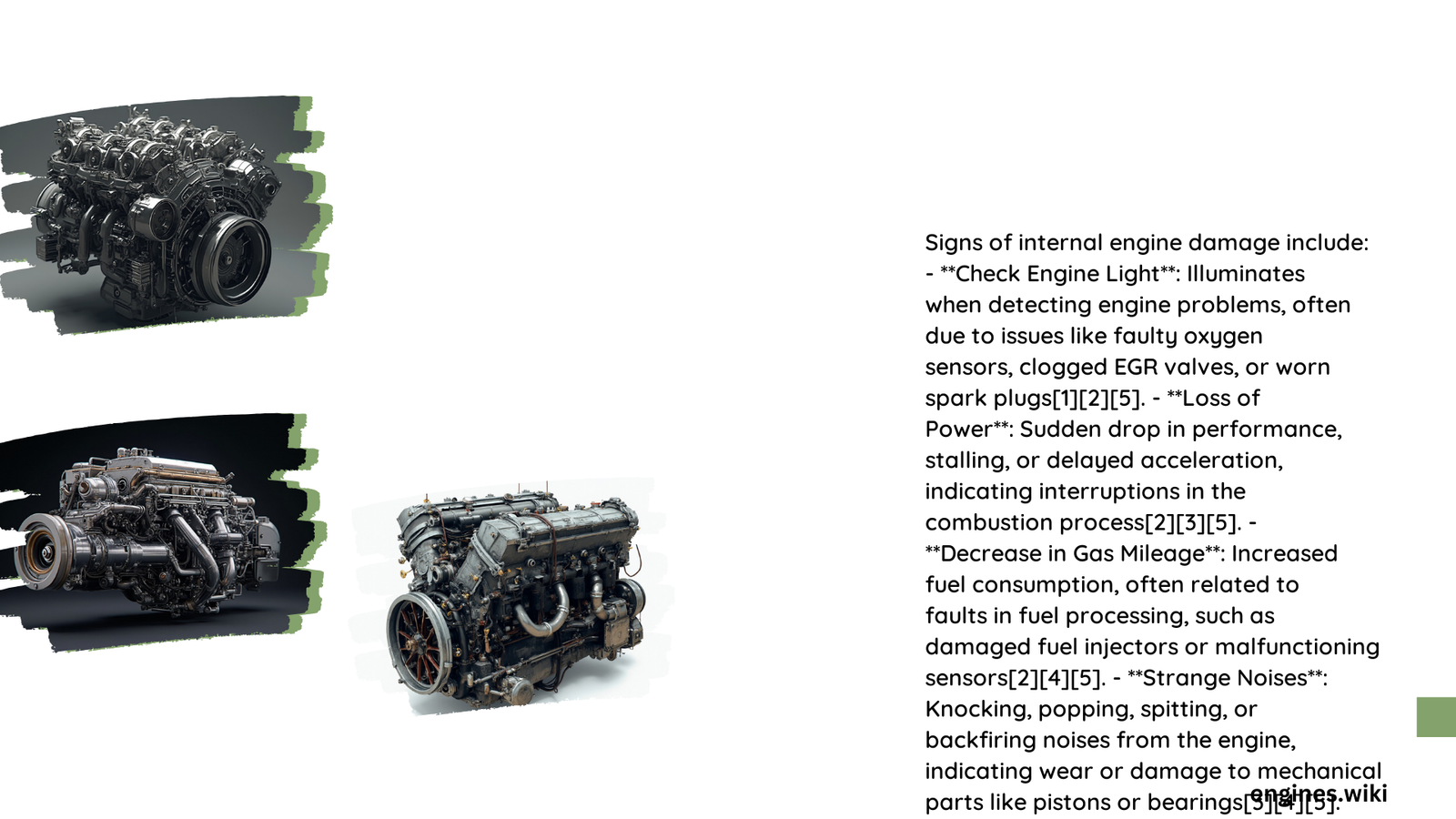Internal engine damage can silently compromise your vehicle’s performance, potentially leading to catastrophic mechanical failure. Vehicle owners must recognize early warning signs that indicate underlying engine problems, such as abnormal sounds, unusual smoke emissions, oil pressure fluctuations, and coolant system irregularities. Understanding these symptoms can help prevent expensive repairs and extend your engine’s operational lifespan.
What Are Unusual Engine Sounds Indicating Damage?
Engine sounds serve as critical diagnostic indicators of potential internal damage. Different types of sounds can reveal specific mechanical issues:
Knocking Sounds
- Metallic tapping noises during acceleration
- Repetitive sound increasing with engine RPM
- Potential causes:
- Low-octane fuel
- Lean air-fuel mixture
- Worn engine bearings
- Carbon deposit accumulation
Potential Sound-Related Damage Indicators
| Sound Type | Potential Damage | Severity |
|---|---|---|
| Persistent Knocking | Bearing Wear | High |
| Grinding Noise | Camshaft/Crankshaft Damage | Critical |
| Ticking Sound | Valve Train Issues | Moderate |
How Can Oil Pressure Reveal Engine Health?

Normal Oil Pressure Ranges
- Gasoline Engines: 20-60 PSI at idle
- Diesel Engines: 30-90 PSI at idle
Warning Signs of Oil Pressure Problems
- Sudden oil pressure warning light
- Inconsistent pressure readings
- Visible oil leaks
- Increased engine temperature
What Do Exhaust Smoke Colors Indicate?
Smoke Color Analysis
- Blue Smoke
- Indicates oil burning in combustion chamber
- Suggests worn piston rings
-
Potential internal seal degradation
-
White Smoke
- Signals coolant entering combustion chamber
- Potential head gasket failure
-
Risk of significant engine damage
-
Black Smoke
- Indicates excessive fuel consumption
- Suggests rich air-fuel mixture
- Potential fuel system malfunction
How Can Coolant Leaks Signal Internal Damage?
Coolant Leak Diagnostic Indicators
- Visible puddles underneath vehicle
- Overheating engine
- Decreased coolant levels
- Sweet burning smell
- White exhaust smoke
Critical Diagnostic Recommendations
Immediate Actions
- Stop driving if severe symptoms appear
- Conduct professional diagnostic assessment
- Address issues promptly to prevent extensive damage
Preventive Maintenance Strategies
- Regular oil changes
- Consistent coolant system checks
- Use recommended fuel grades
- Monitor dashboard warning indicators
Technical Complexity of Engine Damage
Internal engine damage represents a complex mechanical challenge requiring specialized diagnostic skills. Professional mechanics utilize advanced diagnostic tools to:
– Perform compression tests
– Analyze oil condition
– Evaluate electronic sensor data
– Conduct comprehensive engine scanning
Cost Implications
Potential Repair Expenses
- Minor repairs: $500 – $1,500
- Moderate damage: $1,500 – $4,000
- Extensive engine replacement: $4,000 – $8,000
Conclusion
Recognizing signs of internal engine damage early can save vehicle owners significant financial and operational challenges. Proactive monitoring, regular maintenance, and immediate professional intervention remain crucial strategies for preserving engine health.
